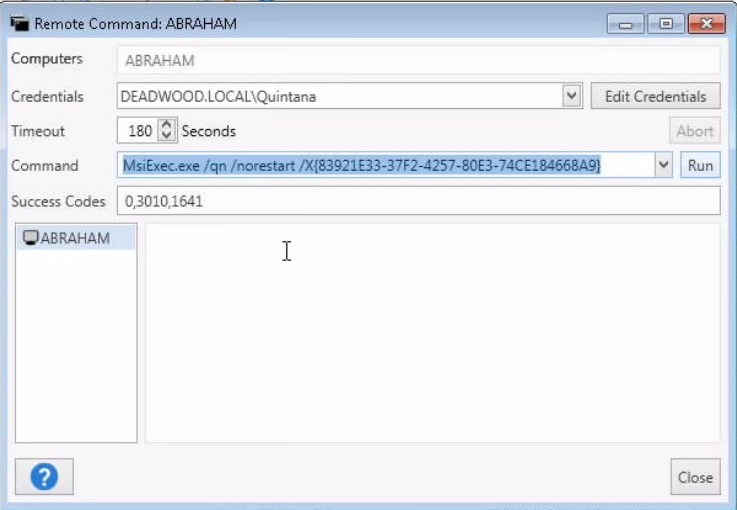Remote Silent Uninstall

DisclaimerThe sample scripts are not supported under any Microsoft standard support program or service. The sample scripts are provided AS IS without warranty of any kind. Microsoft further disclaims all implied warranties including, without limitation, any implied warranties of merchantability or of fitness for a particular purpose. The entire risk arising out of the use or performance of the sample scripts and documentation remains with you.
In no event shall Microsoft, its authors, or anyone else involved in the creation, production, or delivery of the scripts be liable for any damages whatsoever (including, without limitation, damages for loss of business profits, business interruption, loss of business information, or other pecuniary loss) arising out of the use of or inability to use the sample scripts or documentation, even if Microsoft has been advised of the possibility of such damages.
Remote Silent Uninstall Windows 10
September 24, 2015We often discuss ways to silently install various applications and how to customize those installations to work for you in your environment. But what if you need to silently uninstall an application? Well, let’s go into it. Finding Uninstall CommandsFirst order of business, uninstall commands.

Many applications will have one available (in fact it is these commands that are used when you uninstall applications from the Windows Control Panel). A quick way to check if an application has an uninstall command is to use. If available, PDQ Inventory will collect the uninstall commands for applications already installed on machines. The next step is to find out how to make those commands run silently.You can also silently uninstall from within PDQ Inventory. (This is handy for doing a quick uninstall on one or two of your computers, but if you need to install from multiple computers or even all your computersread on further in this post.)After adding in computers in PDQ Inventory and, click on a computer that has the application you want uninstalled and select Applications.You’ll notice a column titled Uninstall. Now, in order for applications to uninstall silently they must have silent parameter.If an MsiExec.exe is listed in the Uninstall column it’s your lucky day.
Cisco Remote Silent Monitoring
When an uninstall command uses MsiExec.exe PDQ Inventory makes the necessary changes to the uninstall command to have it run silently. There are only a few instances (Microsoft Office being one) where additional parameters are needed for an msiexec uninstall. Right-click on the applications and click Uninstall. This will open up a remote command window. What If It Isn’t a MsiExec.exe?If your application isn’t of the MsiExec.exe variety, not all hope is lost.

Many vendors have silent parameters available that can be added to the commandline. You’ll just have to do a little homework here. Every application is different, so what works for a silent parameter with one will not necessarily work for another.Note: Do not attempt to uninstall the application without accompanying silent parameters. It WILL hang and ultimately fail. Silently Uninstall from Multiple ComputersPDQ Inventory is handy for getting those one off uninstalls done. But what if you need to uninstall an application from an entire department or all computers everywhere that you manage? That’s where PDQ Inventory’s sister product comes into play.in PDQ Deploy.
Go to File New Package.Add a command step (remove the default install step) and put the uninstall string (with silent parameters) in the command field. You can copy and paste the string found in PDQ Inventory and then add the silent parameters for that application. (MsiExec.exe is one exception where PDQ Inventory will already have those silent parameters supplied.)Remember: Use one line per command in the command step. If you want to run multiple commands hit enter between commands.